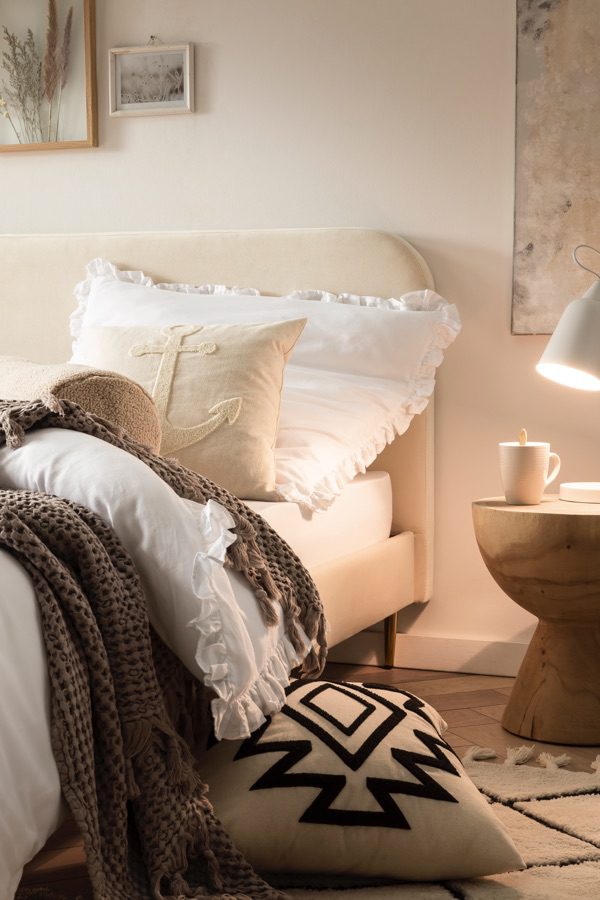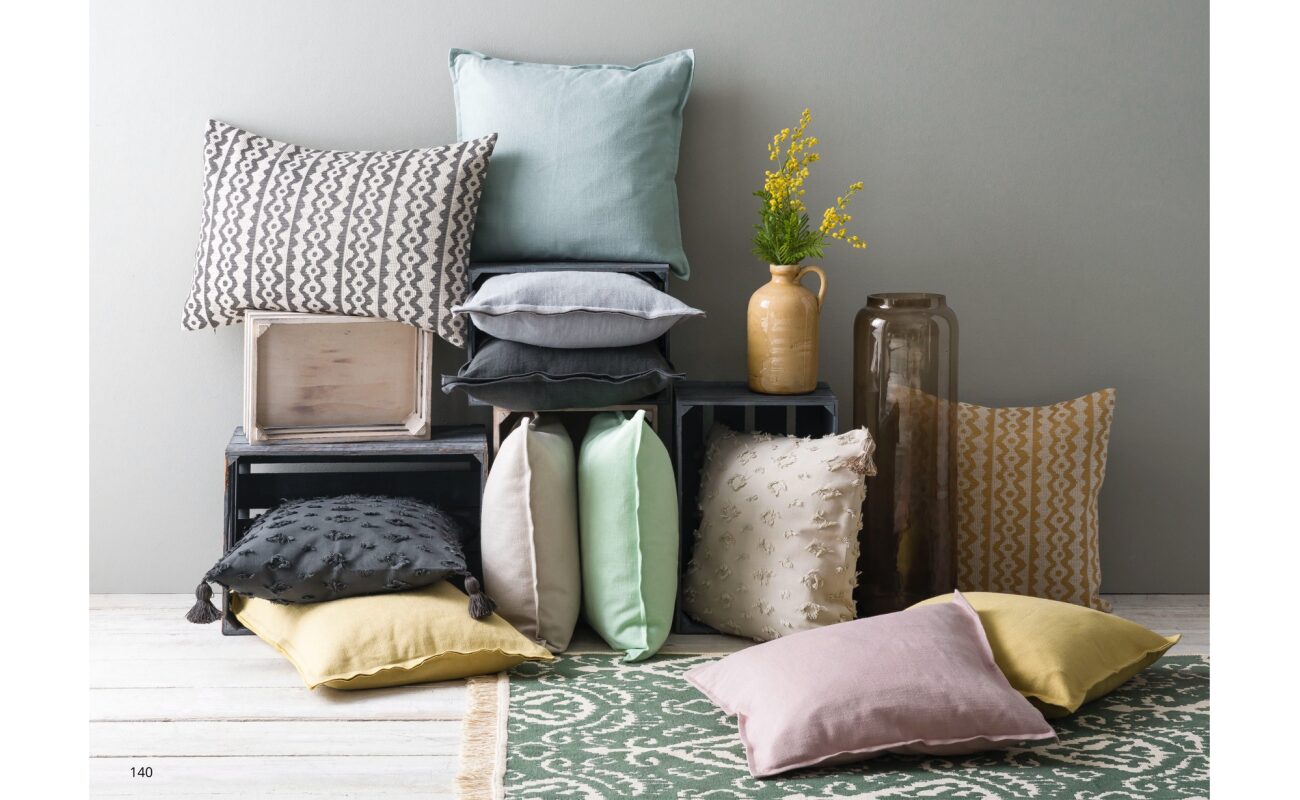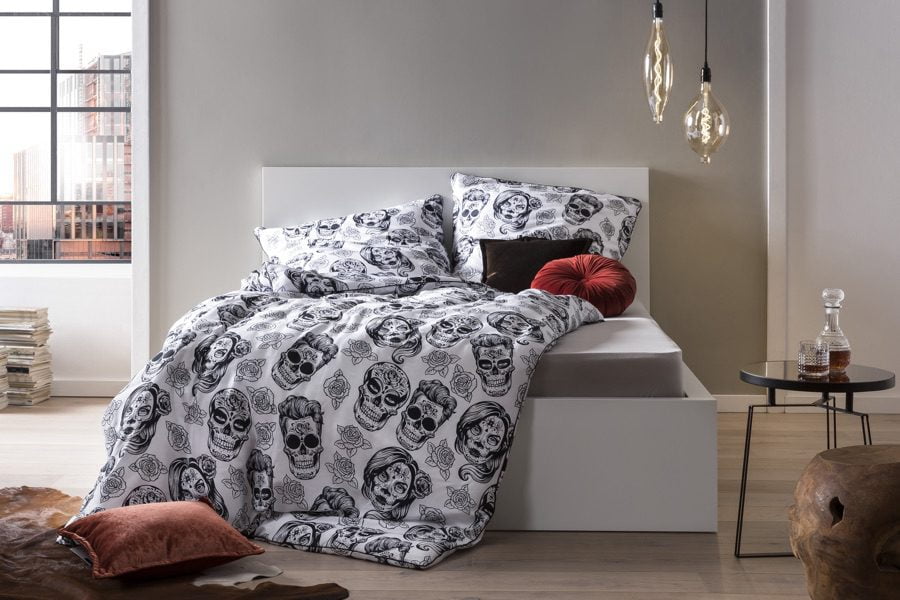For a restful sleep you need the right mattress and an optimal sleeping environment. But bed linen can also have a significant impact on the quality of your sleep.

Jump to section
What is bedding?
Bedding refers to the sheets, blankets, pillows and other bedding items that people use to cover and protect their mattresses. Types of bed linen include mattress covers, fitted sheets, flat sheets, pillowcases, duvets, comforters, quilts, and bed skirts. You can buy duvet covers individually or as part of a bedding set, e.g. B. A duvet set (a duvet, a comforter, a bed skirt and pillows) or a sheet set (a fitted sheet, a flat sheet and two pillowcases). Bedding is important because it provides warmth, affects sleep quality, protects the mattress and promotes good hygiene.
11 types of bedding
There are different types of bedding that many people use for both practical and decorative purposes. Some common types of bedding are:
1. Bed border: A bed surround is the material that covers the lower part of the bed frame and extends to the floor, which can stylishly conceal storage space or box spring beds.
2. Bedspread: A decorative duvet that serves as the top layer over all bedding. Bedspreads are useful for people who want to protect their bedding from elements such as dust or odors.
3. Duvet: A blanket is a long piece of soft, woven material that is often used as a bed cover. Blankets are available in a variety of fabric types including microfiber (a blend of polyester and nylon), wool, polyester, satin, and other synthetic materials.
4. Down Comforter: A down comforter is a slightly thicker, padded blanket that is placed over the other bedding to provide additional warmth. There are many choices for this type of bedding and while many choose down comforters, there are other down alternatives such as viscose or polyester.
5. Duvet: A comforter is a duvet cover with a decorative woven pattern. It does not cover the entire bed, but usually only hangs so low that it covers the bottom of the bed.
6. Duvet: A down duvet is a thicker version of a duvet. It is a soft cloth bag filled with down feathers or synthetic material. Most people buy a duvet cover for comforter protection or decorative purposes.
7. Fitted Sheets: A fitted sheet is a bedding that fits snugly to the mattress (or mattress cover). They come in deep pocket versions for deeper mattresses.
8. Flat Sheets: Flat sheets or top sheets are bedding that is placed over the fitted sheet, leaving the top open. This thin sheet can serve as a lightweight blanket in warm weather.
9. Mattress Cover: A mattress cover wraps the mattress and protects it from dust mites, stains, bed bugs, mold and even regulates the temperature. Choosing a hypoallergenic mattress cover is optimal for allergy sufferers as it can protect against allergens. Mattress covers keep your mattress free from excess body dirt and sweat.
10. Quilts: A quilt is a quilted blanket that is flatter than a duvet and fits more flush to the bed. You can use a quilt as a duvet, but they tend not to be as warm as their fluffier duvet cousins.
11. Pillow: There are two main types of pillows: sleeping pillows and throw pillows. Sleeping pillows are the pillows you sleep on at night and are usually covered with a pillowcase or pillowcase (a decorative pillowcase that covers the pillow) for protection. Throw pillows are decorative pillows that come in a variety of colors and styles to accentuate parts of a room.
How bedding affects sleep
The right bed linen can contribute to restful sleep, but the wrong bed linen can also affect the quality of sleep. Here are some ways bedding affects sleep:
1. It can irritate your skin. Sheets that are too coarse or made of tough synthetic fibers can irritate your skin or make existing skin conditions worse, making it difficult for you to rest and relax at night.
2. Too much heat can be stored. Some people tend to overheat at night while they sleep, leading to excessive sweating and dehydration. If you're too warm while you sleep, you may toss and turn in search of comfort or drink more fluids to regulate your body heat, leading to frequent late-night trips to the bathroom.
3. It can't keep you warm. While overheating at night is a problem for some, others may be more sensitive to cold. If you use too many breathable fabrics, you may have trouble getting warm at night, resulting in poorer sleep quality.
4 tips for choosing your bed linen
When it comes to furnishing your bed, you should try to find the best quality within your budget, as bedding can have a huge impact on the quality of your sleep. Many factors can influence the purchase of bedding, such as: e.g.:
1. The comfort: The material and weave of the fabric from which the bed linen is made can play an important role in how comfortable it feels. Thread count refers to the number of woven threads in a square inch of fabric and ranges from 100 to 1.000. The higher the thread count, the softer a sheet usually feels. The lower thread counts can feel coarser because the weave is looser. However, high thread count sheets tend to be more expensive and not always synonymous with quality, with some manufacturers inflating the count to sell them at a higher price. Experts generally recommend buying sheets between 200 and 400 thread count for best results.
2. Breathability: When buying new bedding, pay attention to your preferred sleeping temperature. If you usually feel hot when you sleep, you should choose breathable fabrics. On the other hand, if you tend to get chills at night, you should install at least one synthetic layer that locks in body heat.
3. Hypoallergenic: People with allergies can benefit from bedding with antimicrobial properties. By choosing materials that are naturally resistant to dust mites and mold, you can enjoy a more comfortable night's sleep.
4. The quality: It may be tempting to buy an inexpensive, visually appealing sheet set, but an investment in yours bed linen can alter the quality of your sleep, which can have a positive long-term impact on your health by allowing you to rest in a more comfortable bed.



